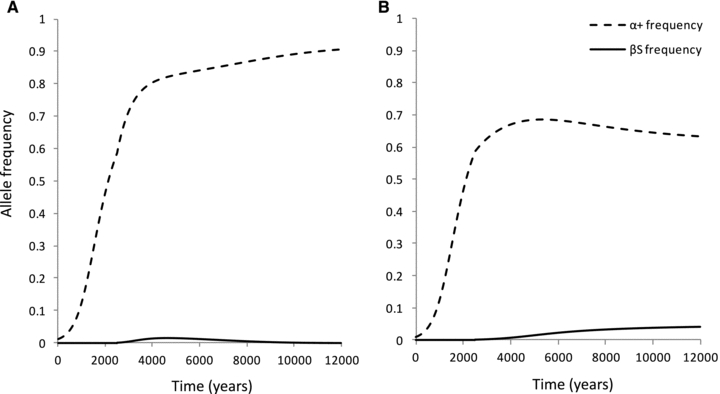Figure 3.

The behavior of α+ and βS, with epistasis and varying malaria selection levels. Panels (A) and (B) indicate how the equilibrium frequencies of α+ and βS change over time. In both panels, the initial frequency of α+ was 0.01 at time 0 and malaria was responsible for 19% of the wild-type mortality over the first 2500 years. After 2500 years, βS was introduced at a frequency of 0.001, and the levels of malaria selection changed as follows: in panel (A) malaria became responsible for 27% of total wild-type mortality, and in panel (B) malaria became responsible for 14% of the total wild-type mortality. In these scenarios, we assumed there was a slight cost to the α+α+ phenotype (it was assigned a mortality rate of 0.031 years−1 compared to the wild type 0.03 years−1).
